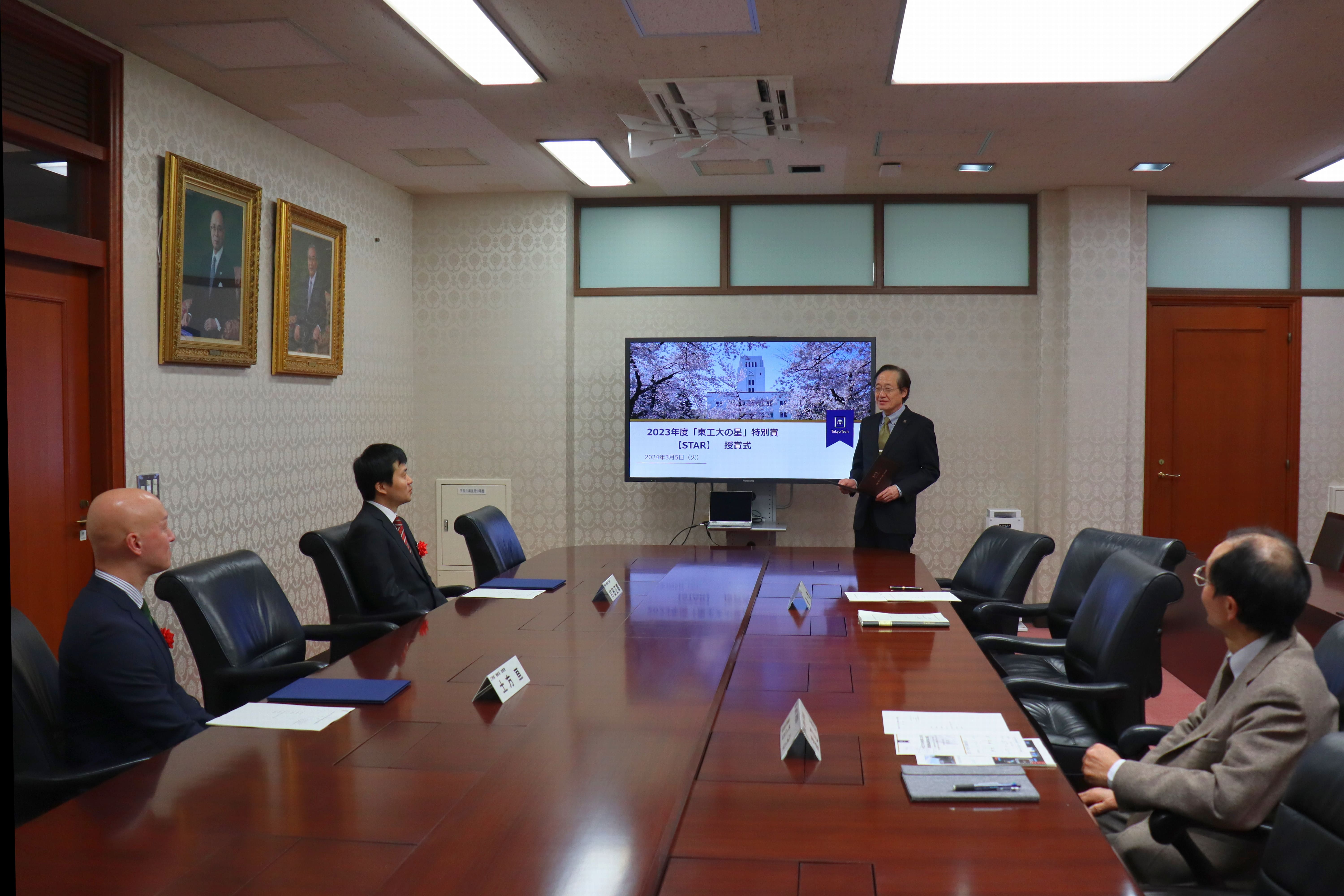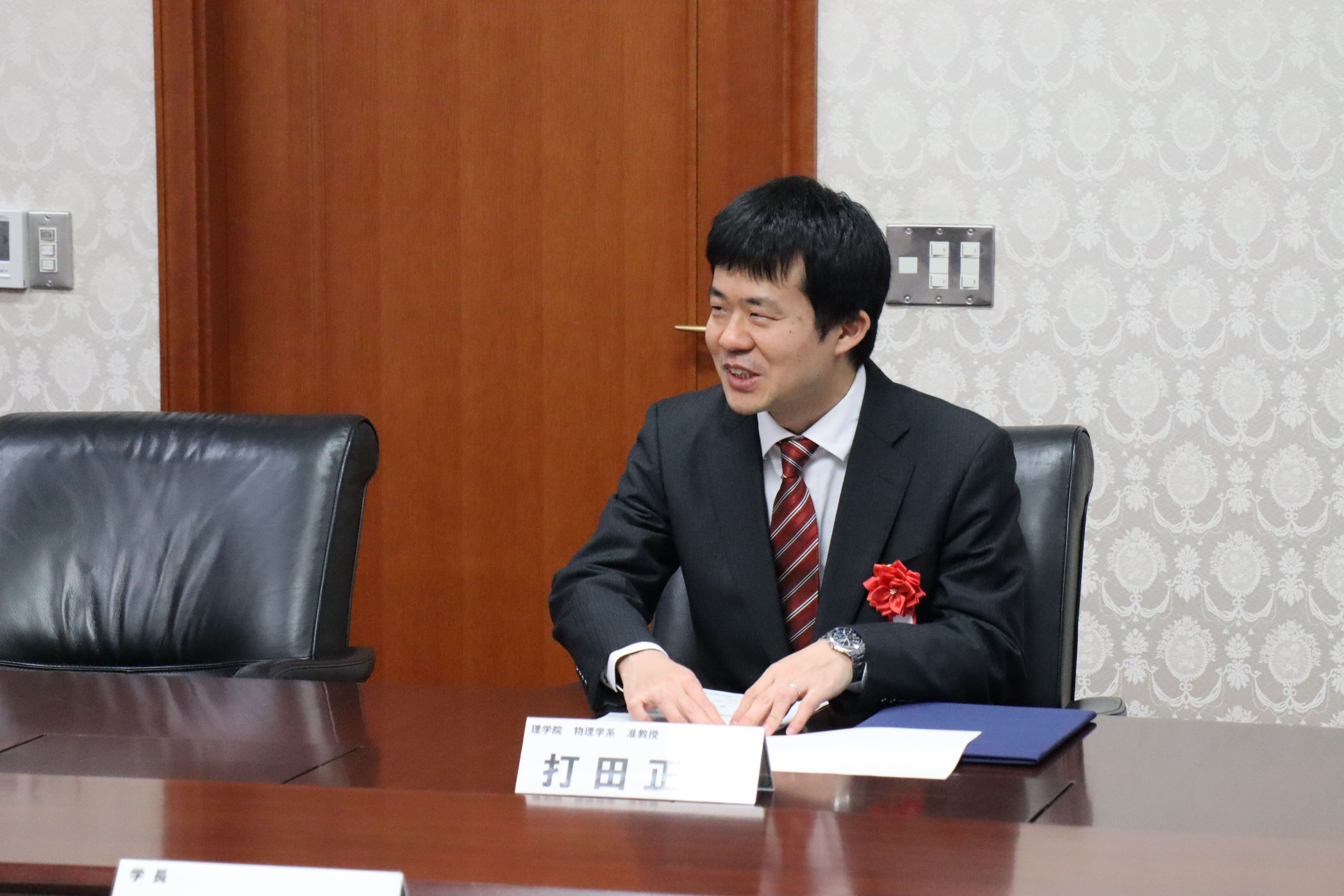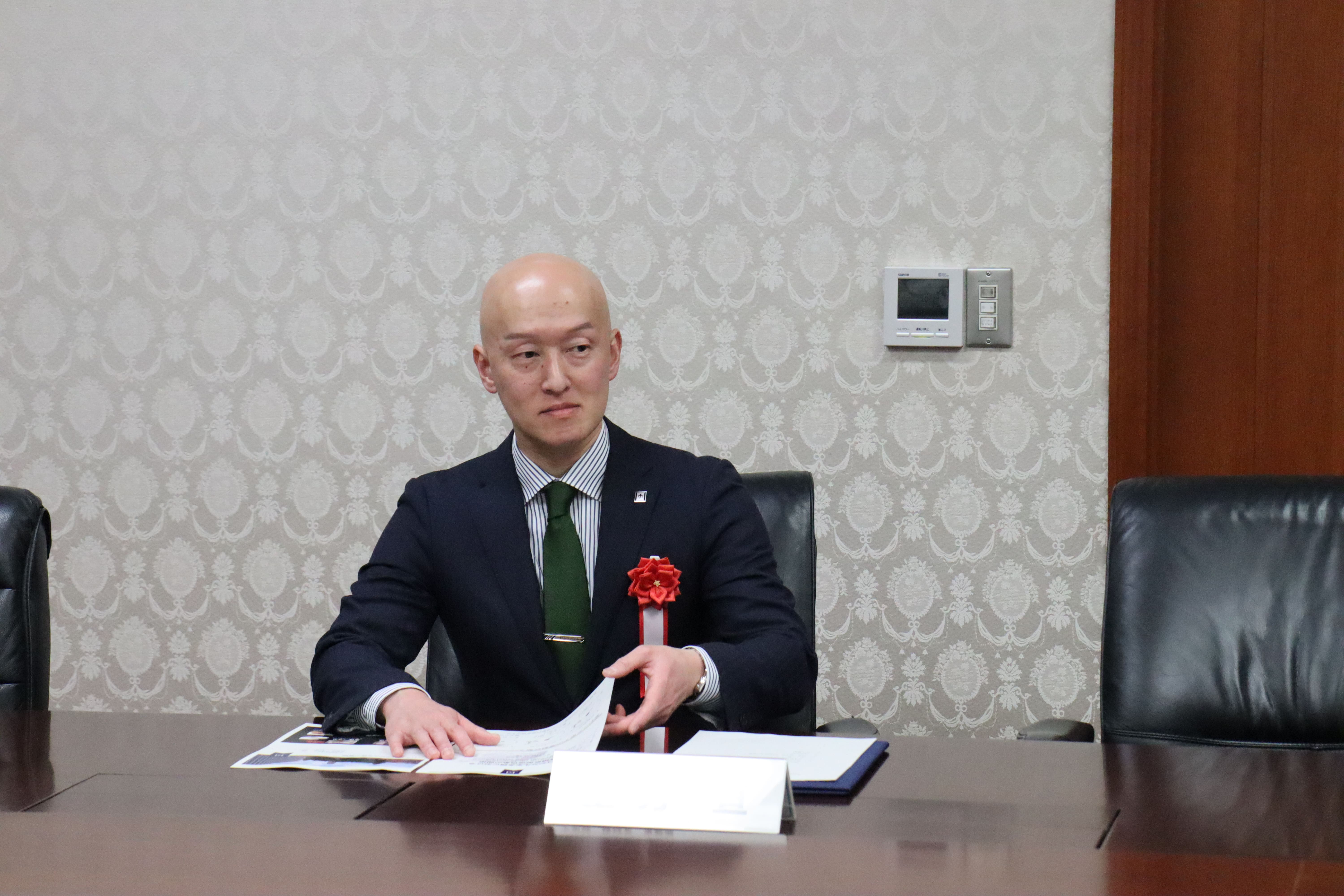Special Award for Tokyo Tech Advanced Researchers【STAR】
Overview
By utilizing the Tokyo Institute of Technology Fund, we provide large-scale grants to young researchers grappling with research topics that have the potential to become national projects in the future and to those who have achieved distinguished results in the fundamental sciences. The fund is designed to support these rising stars of the next generation.
STAR began providing support in 2013.
【Selection process】
Based on their career and research achievements, recipients are selected by the president and the director of the Office of Research and Innovation. Individuals cannot apply for this grant.
<Selection criteria>
- Young researchers grappling with research topics that have the potential to become national projects in the future
- Young researchers who demonstrate outstanding achievement in the fundamental sciences
<Eligibility>
- Early-career researchers with the title of associate professor or below (in principle, under the age of 40)
Application
Recipients are selected by the president and the director of the Office of Research and Innovation. Individuals cannot apply for this grant.
Every year around January, the director of the Office of Research and Innovation notifies selected researchers of their grants.
FY2023 winners
| Affiliation | Title | Name |
|---|---|---|
| Department of Physics, School of Science | Associate Professor | Masaki UCHIDA |
| Department of Mechanical Engineering, School of Engineering |
Associate Professor | Wataru HIJIKATA |
Research overview
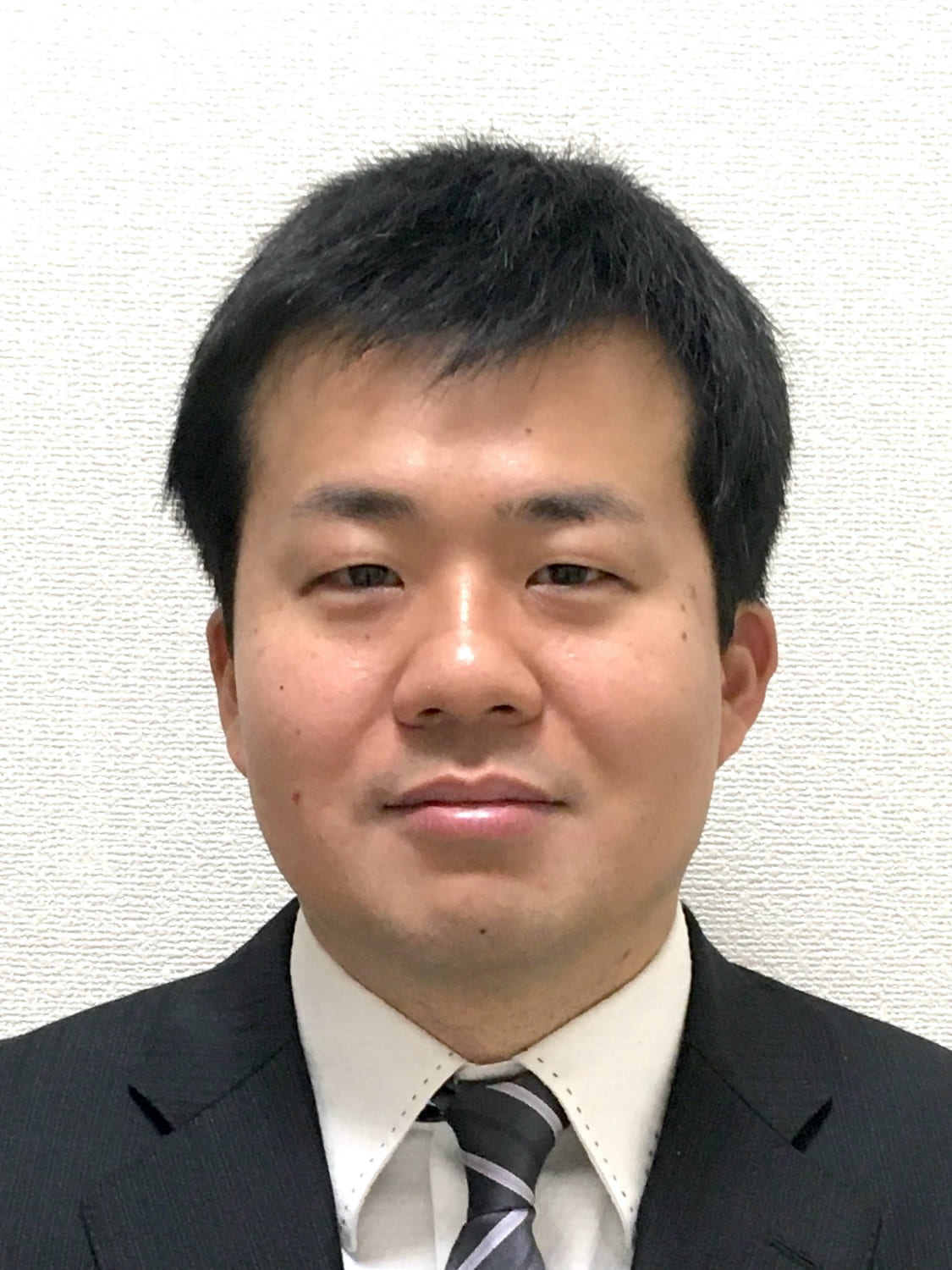
<Associate Prof. UCHIDA>
【Pioneering anomalous magnetotransport phenomena in topological semimetal】
Band structures are used to describe electrons in materials quantum-mechanically. Recently a new class of materials called topological material, which focuses on topological properties of electronic bands, has become very active in research. Among topological materials, topological semimetals, which have a closed band gap at a point, have been found to host a low-energy band structure, a state originally proposed in the field of particle physics. We have fabricated very high-quality thin films of topological semimetals by a technique called molecular beam epitaxy and investigated the conduction phenomena of electrons. In this study, we would like to investigate unusual conduction phenomena originating from this point and to connect them to future electronics applications.
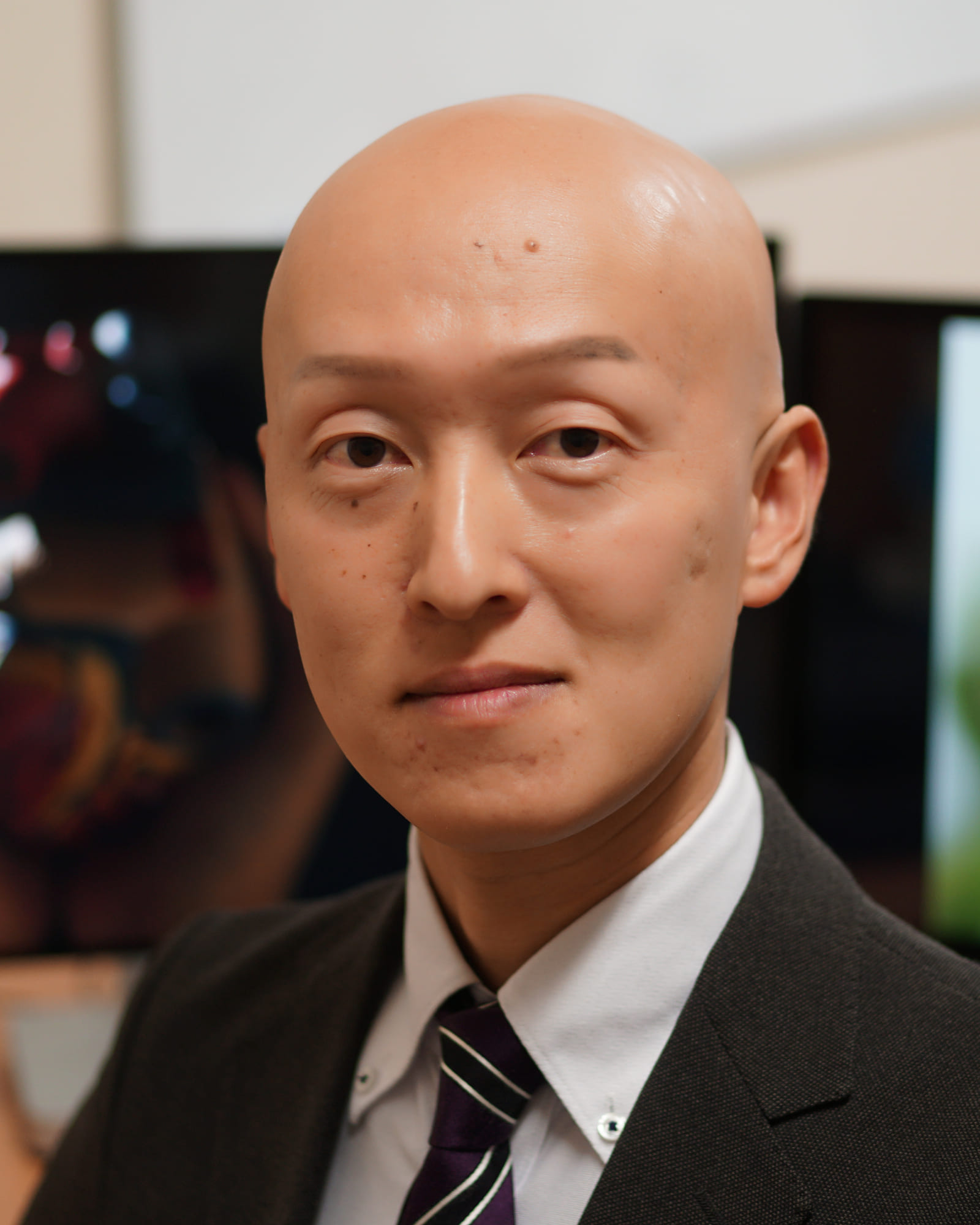
<Associate Prof. HIJIKATA>
【Study on ventricular assist device and engineering application of biological tissues intended for integration of human and machine】
With the development of medical technology, the average life expectancy of the human population has increased significantly over the past 200 years. However, healthy life expectancy, which is defined as the period during which people can live without being restricted by health problems, is shorter than the average life expectancy, with a gap of about 10 years in Japan. From this background, I believe that there is a need to develop science and medical technology that will provide the foundation for people to lead enriched lives, not only by extending average life expectancy, but also by extending healthy life expectancy and improving quality of life. In my research, I am conducting research on ventricular assist devices used in the treatment of patients with severe heart failure, based on the concept of integrating humans and machines to realize medical technology that enables people to live like healthy people even in the event of illness. Since conventional ventricular assist devices generate a continuous flow at a preset motor speed, the flow rate cannot be increased or decreased according to the patient's exercise condition, and the risk of thrombosis is increased due to the loss of the pulsatile flow. Hence, I am developing a ventricular assist device that can control heartbeat synchronization according to the timing of the heartbeat by using electromagnets used in the ventricular assist device to estimate the beating of the diseased heart in real time. As another approach to the integration of human and machine, I aim to create novel medical and welfare devices such as power-assistive suits that can repair themselves in the future by utilizing biological tissues such as skeletal muscles. In particular, I am now developing technologies to realize the design and control of biological tissues using engineering methods.
Comment
<Associate Prof. UCHIDA>
I am very honored to be selected as a recipient of the STAR grant. I would like to express my sincere gratitude to all the donors of the Tokyo Tech Fund and the selection committee members. I would also like to take this opportunity to express my gratitude to my supervisors, collaborators, and laboratory members working together. With such large-scale support, unparalleled as the support provided by a university, I would like to further pursue my research.
<Associate Prof. HIJIKATA>
I am very honored to have been selected for the "Special Award for Tokyo-tech Advanced Researchers [STAR]" program. I would like to express my sincere gratitude to all the contributors and selection committee members of the Tokyo Institute of Technology Fund. This research cannot be done by me alone. I would also like to take this opportunity to thank my collaborators and laboratory members. With this support, I will continue to promote challenging research.
Award Ceremony
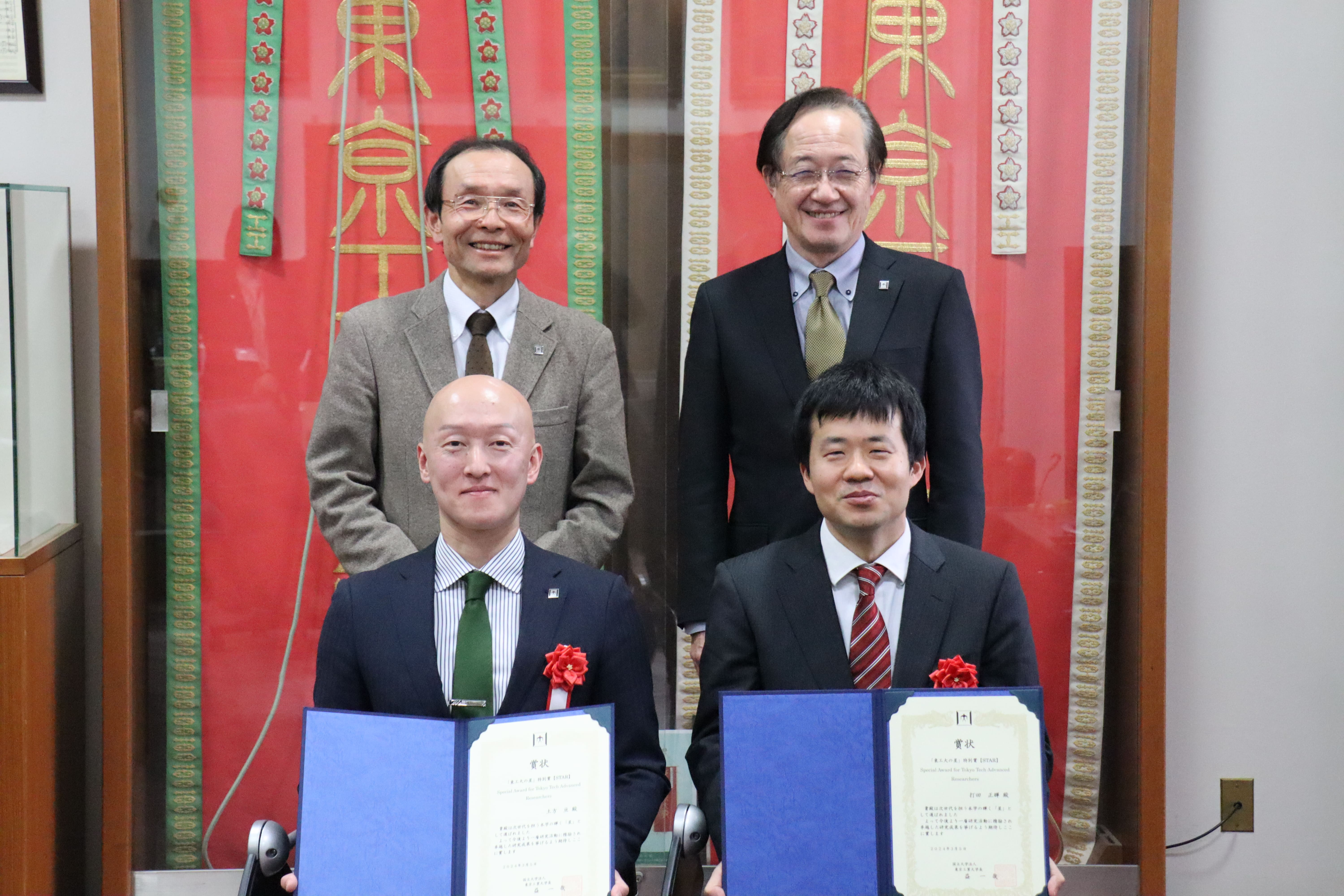 (Front row from left) Associate Prof. Hijikata, Associate Prof. Uchida
(Front row from left) Associate Prof. Hijikata, Associate Prof. Uchida(Back row from left)Executive Vice President for Research Osamu Watanabe, President Kazuya Masu
